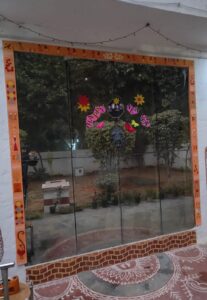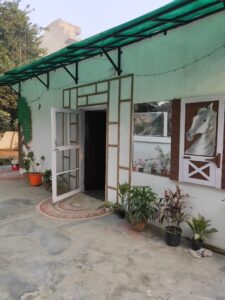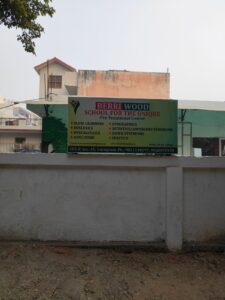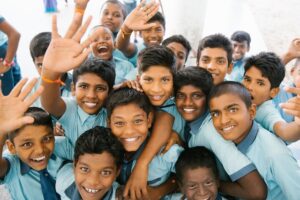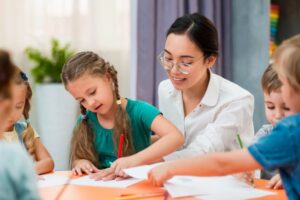Services
Our Services
| Educational support & Pre-vocational training (Age appropriate) |
|---|
|
|
| Learning disability remedial teaching – to enhance scholastic performance |
|---|
| Types of learning disabilities: |
|
|
|
Remedial teaching can bring about significant changes in academic skills namely attention, copying, reading, arithmetic, and spelling. 33% had definite improvement in 4 or more domains. (Vincent AC, Elenjickal MG. Effect of remedial teaching on the scholastic performance of children with learning disability.) |
| Talk therapy – To help develop and initiate conversations |
|---|
|
Talk Therapy can help people with autism and children with communication problems. . It may help children address social isolation and help initiate and continue with conversations. |
| Play Therapy |
|---|
|
To help child improve focus, endurance and bond with other children Play therapy will help them built strength, balance, endurance and cognitive skills. It will also help them bond with their peers and develop the act of sharing. It will also help them understand how to accept failures/loss and develop a spirit of respect and generosity in a group activity, in addition to giving them the chance to interact with peers in an out-of-school setting. Play therapy will help them sleep better after a good day of playing around and shedding their energy. |
Targeted Therapy
| HIPPOTHERAPY – Sensory and motor benefits for autistic children |
|---|
| Hippotherapy involves horse riding. Hippotherapy in Autism has been shown to improve one’s balance, strength, and motor coordination. It has also been proven to be effective in promoting language, sensory regulation as well as improving social skills as students often form an emotional bond with the horses they ride on. This then motivates children to perform skill-building tasks. |
| Benefits of Hippotherapy: |
|
|
| ART THERAPY |
|---|
| Autism art therapy is an incredible way for children to communicate and express themselves non-verbally. Just some of the ways in which art therapy is useful to children on the autism spectrum include: |
|
|
| RECREATIONAL THERAPY |
|---|
|
Short trips exploring the city to help children get accustomed to a new place and help exhausted parents take a day off ! |
| PHYSICAL EDUCATION |
|---|
|
skills necessary to enhance physical fitness Physical education and physical activity-led programmes may be considered an optimal opportunity for children with ASD to improve their strength, agility, stamina, and personality while perfectioning their body-mind-spirit connection. It will also provide an avenue for children to express themselves through movement and physical activities. PE will include Strength exercises and Yoga. |
| COMMUNICATION AND SPEECH THERAPY |
|---|
|
including articulate therapy and language integration activities Children with autism have challenges with communication and social skills. They often find it hard to have conversations and may not notice social cues. Some children with autism may not talk at all, and others may not have trouble talking. All people with autism have some degree of challenge with communication (such as making friends or maintaining relationships at school or work). Speech therapy administered by speech language pathologists (SLPs) or Speech Therapists helps in: |
|
|
| SLPs may also teach families and/or caregivers how to play with their child while teaching skills like |
|
|
| For autistic people who are transitioning to work, SLPs can also help them |
|
|
| SOCIAL AND LIFE SKILLS COACHING |
|---|
|
helps develop one’s ability to solve real-life problems without getting overwhelmed Essential social and life skills: |
|
|
|
While learning these life skills is a continual process, parents can take an active role at home with tasks that provide real world practice. |
| SENSORY INTEGRATION THERAPY |
|---|
|
Sensory integration therapy (SIT) is mainly performed by occupational therapists to help children improve their processing and integration of sensory inputs to gain appropriate adaptive response to everyday stimuli. SIT positively affects the child's response to sensation by reducing stress, increasing adequate adaptive responses to sensory stimuli, concentrations, and social interactions. |
